Pacific Drive review: "Brilliant, infuriating, and frustrating in equal measure"
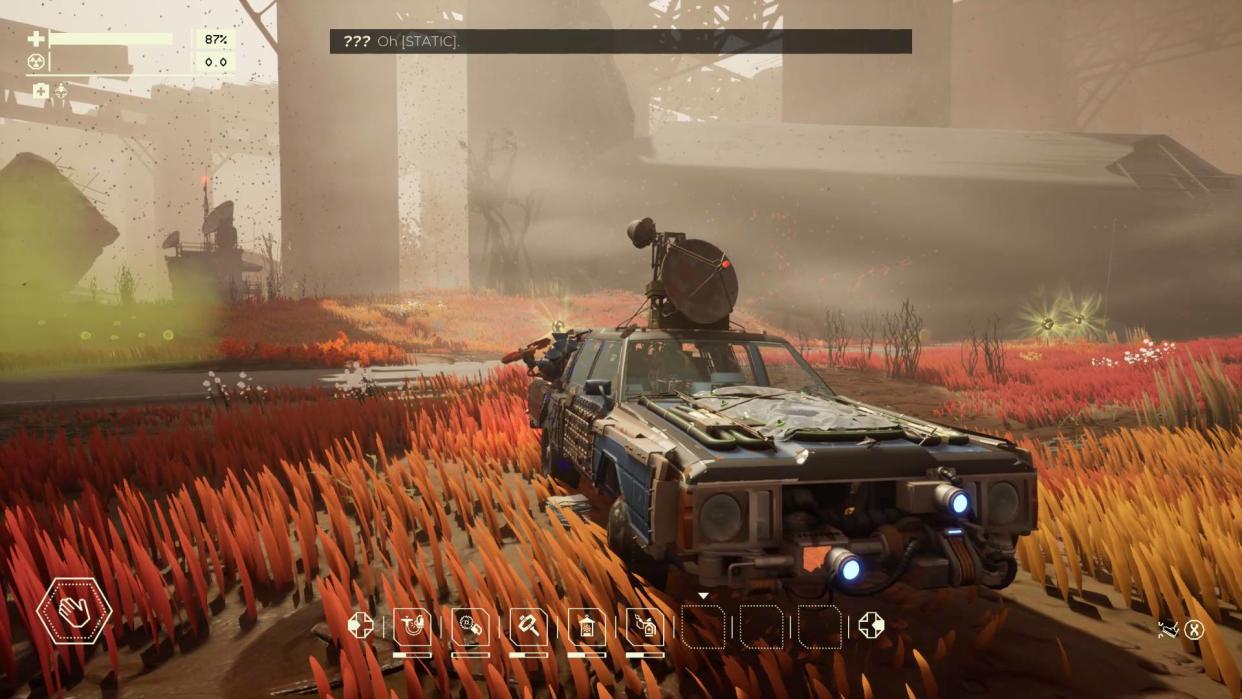
There are moments where Pacific Drive nails its vibe so well that it's undoubtedly one of the most atmospheric, characterful things I've played. Just you, your car, and the radio, taking on a spooky doom valley full of supernatural hazards and threats. When you're out in a dark forest, scavenging for parts as strange noises and eerie lights break through the trees around you, Pacific Drive can be an incredible experience.
Fast Facts
Release date: February 22, 2024
Platform(s): PC, PS5
Developer: Ironwood Studios
Publisher: Kepler Interactive
But it can also be a maddening one as you drive out to explore and then battle to get back to safety. There's an all or nothing feel to success as you navigate the dangers, which tends to alternate between zero and absolute calamity. The mid-game is defined by a stiff learning curve, and a density of information that often leaves you feeling stupid when you realize you've missed something that wasn't explained well and has just been making your life harder. A lot of elements don't feel obvious and it's a game where many shortcuts aren't clearly marked, often leaving you taking the long way around because you never knew any better until you looked back.
Drive Time
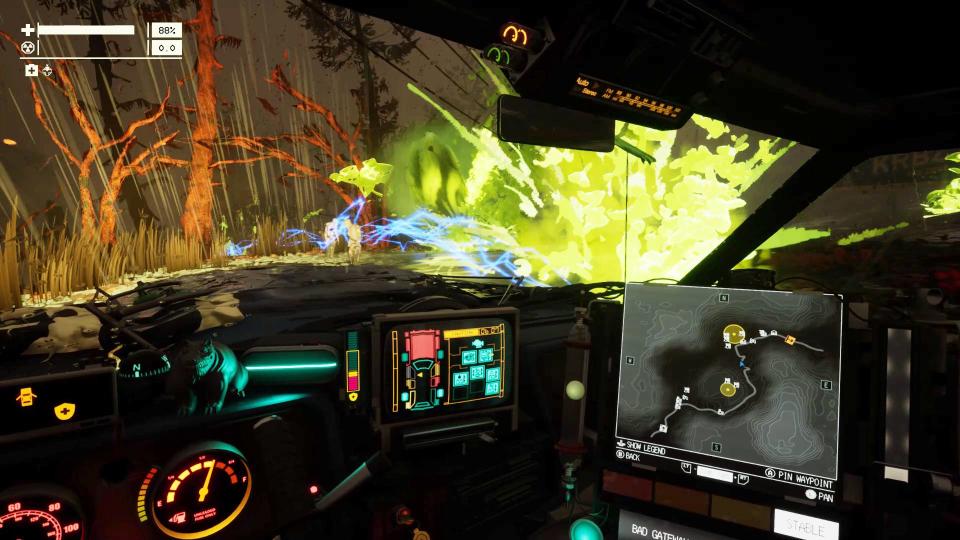
Pacific Drive starts when you accidentally get drawn into the Olympic Exclusion Zone, the site of some past scientific accident that's now a hotbed of weirdness. Anomalies rip the ground up unpredictably, or unleash acid and electrical damage across random hotspots; strange creatures and machines roam in search of victims, or maybe friends? Nothing here is inherently out to get you, as such, it's just all very dangerous.
Even the one thing working in your favor is technically trying to kill you – an old car that's a 'remnant' of the catastrophe that created the zone. Its strange abilities keep you alive, but it's psychically linked to you in a way that will eventually drive you mad – unless you can escape and break the bond. To do that you need to drive out on increasingly risky journeys into the anomaly zone to get what you need, survive everything it throws at you, and get back to your garage to upgrade, rebuild, and try again.
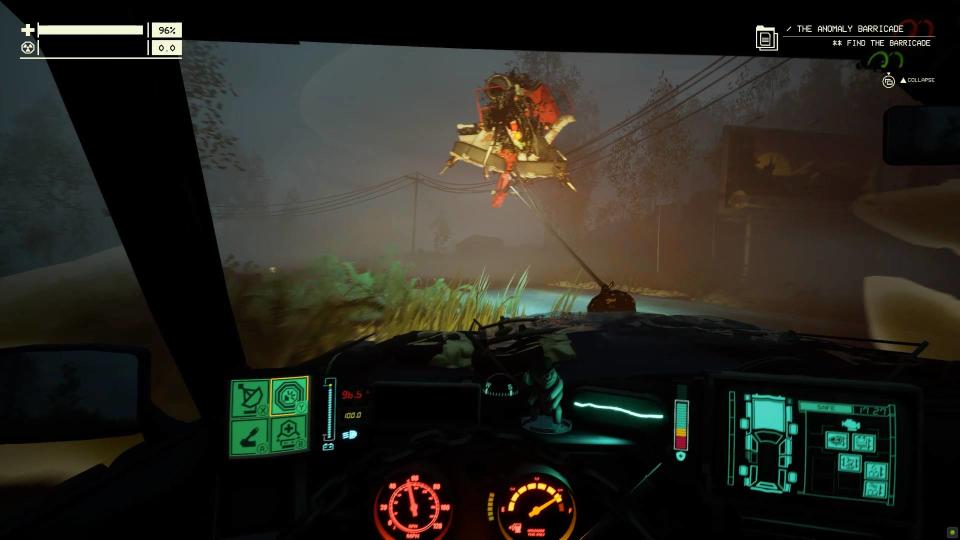
Whether you're heading out for an objective, or risking a more general run for supplies, the routine is always the same. You pick a location, which you then drive around, scouting buildings and wrecking cars for scrap, plastic, and other resources as you go which you can then use to repair your car via a crafting system in the trunk, all while taking as much as you can carry back to your garage base for more involved repairs and parts crafting. Once you're ready to leave, you have to collect one or more anchors – energy sources that are attempting to keep the zone together. Pull one and you'll destabilize the surrounding area, but it will energize up a device that'll let you get home.
The down side here is that when you activate the portal home – which appears as a towering beam of light – the entire region collapses, unleashing an increasingly dangerous array of hazards and an irradiated storm that slowly closes in on you, battle royale style. At that point it's a race to the exit through hell and highwater, driving like a maniac to get out before the car, you, or both, expire.
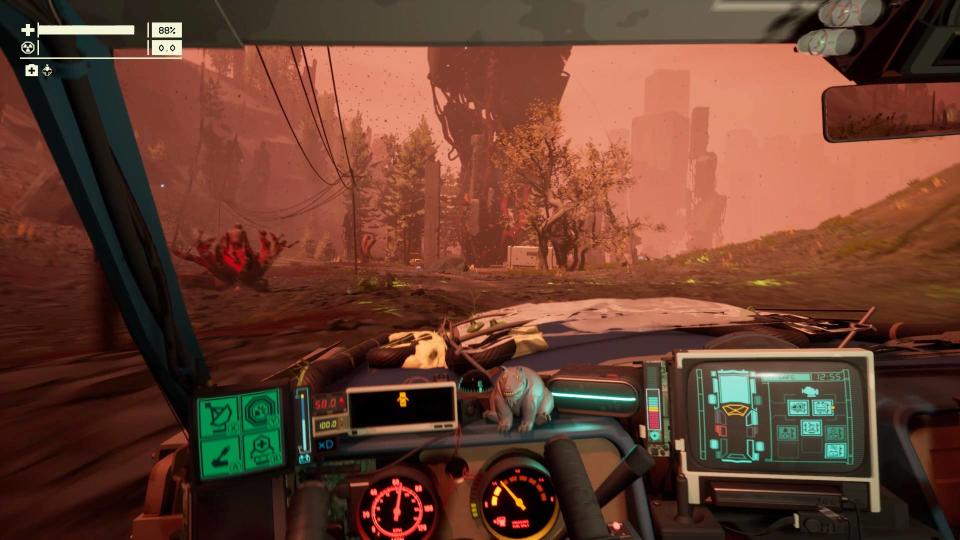
The opening act of all this is glorious. The zone feels alive with an almost mischievous peril as you poke and prod at its boundaries, learning what you can and can't get away with. There's a fantastic atmosphere, with a great soundtrack on the radio and a brooding gloom to the landscapes. You soon become filled with a burgeoning automotive pride as you improve and enhance your car with better panels and doors, or useful gear to replenish fuel, charge batteries, and so on.
Then you hit Pacific Drive's mid-game. Once you head out into tougher territories, you'll find areas that are just all lethal all the time. Literal hot zones full of caustic patches, seismic upheaval, and energy discharges – all of which erode your car, or threaten to destroy it with a single mistake. That lovely atmospheric challenge found all throughout the first act quickly descends into an absolute grinder that chews you up constantly, often in ways that can feel unfair or unavoidable. Regardless how much you prepare or gear up, it only takes one randomly spawning threat, or missed danger through the trees, while desperately trying to deal with everything else, to total your wheels.
This can often leave you limping around in a state that then makes everything else harder – only three good wheels, for example, or a busted engine, or even something like a leaking battery that actually damages what's left of your car more with electrical discharges. You find yourself quickly struggling just to keep everything running, let alone complete objectives, often on what feels like a coin toss. When things get really bad, being slowed by damage will open you up to even more dangers, and stopping to get out of the car for repair will slowly kill you at the same time. These stages can often feel as if you're trying to build a house of cards as a result – where, no matter how careful you are, it only takes the slightest thing to bring everything crashing down.
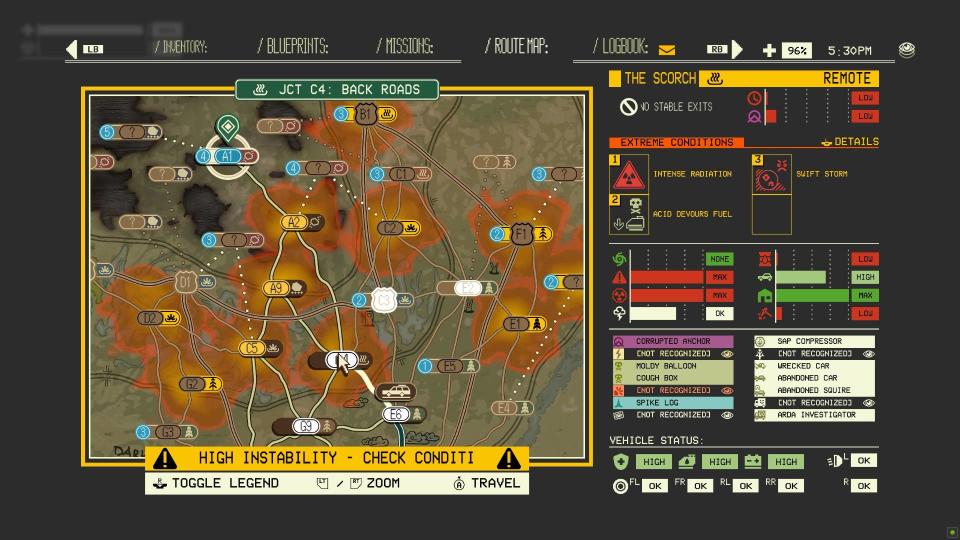
The slightly laborious way of managing runs doesn't always help when so much can be lost so easily. To get to location D, say, you have to drive through location A, B, and C first (and if it's your first time driving a route you'll also have to unlock it first by driving AB, then ABC and finally ABCD). If anything goes wrong at any point you're left trying to limp to the end or abandoning it altogether, at the cost of lost resources and further car damage. There's no real save system to help either, just a manual save back at your garage, or an auto save at the start of each stage. At times I would check my phone, see I only had a couple of hours free to play, and quit because I wasn't sure if I'd be able to finish in the time I had.
Route planner
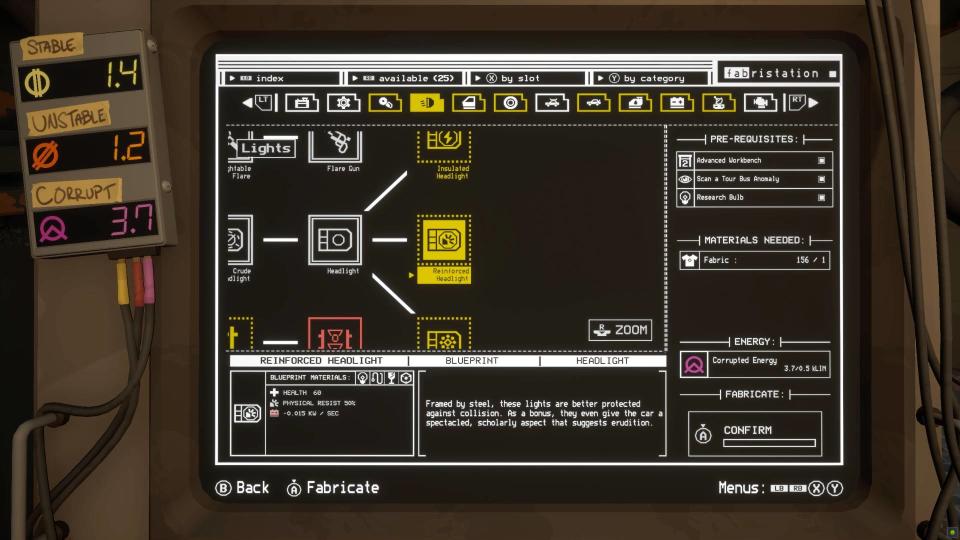
The combination of unpredictable danger and being locked into five or six stage drives can make for costly mistakes, and for a feeling of unfairness when things go wrong. There are several enemies that can pull you off the road, creating a high speed crash that can instantly turn your car into a trundling heap of junk. Even when you know exactly what they are, know how to avoid them and buy the upgrade that can stop them, it only takes one to appear suddenly around a corner without warning to utterly cripple you, seconds into a multistage run.
No matter how careful you are, it only takes the slightest thing to bring everything crashing down.
Part of the challenge here is that there's an incredible density of information to process in Pacific Drive and minimal explanation. There are nearly 30 points where you can fix loads of different things onto your car – from basics like body panels and door, to wind turbines, extra fuel tanks and so on – all of which can break, or take on damaging status effects that alter their effectiveness. There's also 12 separate levelling trees to unlock to access all the gear you can use, the contents of which barely get a line or two of text to clarify what they do. I missed a couple of very useful items because they just didn't sound like anything important – the 'Outfitting Station', for example, just says it lets you 'upgrade yourself' but what it needs to say is 'this is where you craft protective clothing and armor' – something you won't even know exists until after you've built it.
These challenges can be overcome but it can feel like an ordeal, and saw me reach the end of Pacific Drive more embittered than empowered. Even as a certified zone pro, more or less capable of dealing with anything it has to throw at me, you're still just as likely to be wrecked by a single slip up. And no matter how experienced you get, certain resources can still be hard to acquire, or overlap between certain key craftable items, making it harder to replace vital things. It can feel like a real set back when some crucial piece of gear finally breaks and you can't immediately repair it. Equipment can just get 'weary' or 'rusty' or 'unreliable' for example – un-fixable states that can only be remedied by completely replacing them so failure is always on the way.
Despite many, many moments where I had to quietly put the controller down and walk away in seething, furious frustration, I kept coming back and still want to play post credits. There are moments of exhilaration and success that can feel great, while building out and evolving your car is always satisfying. There's even some strong narrative moments. Your only companions are voices on the radio but they're funny and compelling, and even managed to raise a lump in my throat when one well-designed mission cost them a lot more than me. The world, dangerous as it is, is interesting to explore and when it's good, Pacific Drive is very good, but it can all too often be a long and hard road to get there.
